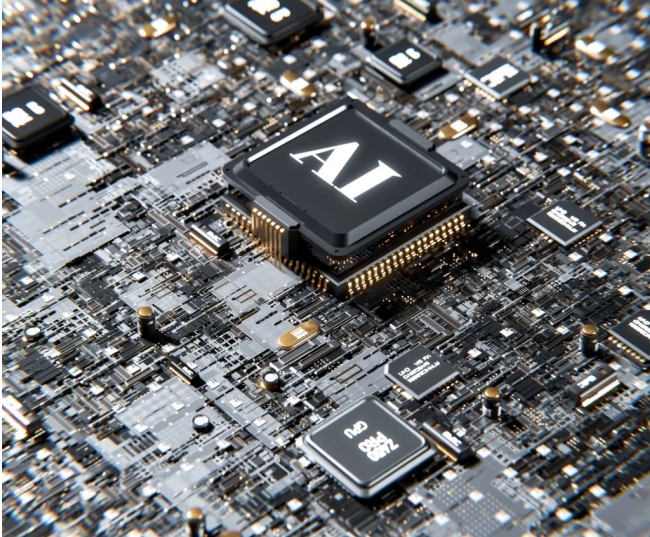PCB Makers Need to Ramp up as AI Spurs Demand
Increased interest in artificial intelligence (AI) has resulted in the need for more PCBs and other hardware. Manufacturers must be prepared to respond to this increased demand.
In early 2024, Foxconn Chairman Liu Young-way expected the company’s business to be slightly better in 2024 but to include challenges stemming from a shortage of chips for AI servers. He also anticipated that global uncertainty due to geopolitical problems could dampen consumers’ AI demand.
This forecast is important because AI servers contain PCBs. A May 2023 market analysis suggests a 12 percent compound annual growth rate for these PCBs between 2023 and 2029. North America has a healthy market share for these boards, partly due to the continent’s position as a global leader in AI research and development development, according to the report.

AI server PCBs support inference and training tasks and help AI algorithms become more efficient. As decision-makers continue rapidly exploring the most appropriate ways to use artificial intelligence, it’s increasingly likely they’ll rely on AI servers that use these PCBs.
In June 2023, analysts elsewhere suggested one Taiwanese PCB maker could soon see AI server components comprising up to 38 percent of its revenue when such parts previously accounted for less than 3 percent. The main reason is the sevenfold increase in PCBs for AI servers versus general-purpose ones.
Another market research report about the general state of PCBs expected a 5.05 percent compound annual growth rate from 2022 to 2027, representing a value of $19.05 billion. That coverage mentioned artificial intelligence as one of the primary demand drivers of the components.
Manufacturers must plan for the increased demand now. One strategy is to look for shortcomings in current processes and pursue continuous improvements. For example, 3D printing and X-ray inspections have made PCB production more efficient.
South Korean PCB maker’s shares soar
The year 2023 was excellent for South Korean PCB manufacturer Isu Petasys Co. The company’s share price rose by 487 percent during the year, making it one of the biggest success stories of South Korea’s benchmark stock index. While commenting on this news, Baik Gil-hyun — an analyst at Yuanta Securities Korea Co. — attributed the current AI boom as one reason for the company’s success. It also helps that the business directly supplies Google and Nvidia.
Although there was a time when the company primarily had telecommunications companies as clients, it has more recently diversified by adding more technology-focused clients to the roster. That decision came at an ideal time for Isu Petasys to capitalize on the increasing interest in artificial intelligence.
However, company leaders must ensure they can cope with the increased demand. Designing PCBs to use components with wider tolerances — such as 1 percent versus .01percent — opens more possibilities for working with a broader selection of materials. That approach could help this company and others take the larger quantity of customer orders in stride.
AI helps PCB manufacturers adapt
Even as artificial intelligence results in PCB manufacturers having bigger orders and heavier workloads, it can help them cope with the demanding conditions. For example, one company has an AI-powered PCB routing and placement tool. It can make turnaround periods up to 10 times shorter by automating previously manual tasks.
Some AI solutions also accelerate quality control and detect issues at the nanoscale level. They can help companies maintain their reputations by reducing the chances of unsatisfied customers.
Manufacturing leaders will get the best results if they determine their biggest challenges and investigate how AI could overcome them. The technology still needs human supervision, but integrating it into factory processes could reduce people’s workloads and allow them more time for other tasks.
One company began using collaborative robots for PCB assembly after leaders noticed too many handling errors. That switch increased assembly line speed by 25 percent while minimizing risks. These machines were also safe enough for humans to work around, and they relieved people of monotonous work.
This approach of seeing a challenge and finding an AI solution to overcome it works well for many industrial leaders. It ensures they study the issues thoroughly and think carefully about how AI could make those obstacles more manageable. Deploying the technology with a clear reason results in efficient use of time and money.
An exciting time for the PCB industry
AI has a bright future, especially as industries experiment with how to use the technology and learn its benefits. PCB manufacturers must stay aware of the changing landscape and prepare to react to larger, more frequent orders from new and existing clients. Improving processes with advanced technologies and addressing persistent weaknesses can enable PCB makers to thrive despite higher demands.
These manufacturers must also remain forward-thinking. How can they reduce the impact of shortages with strategic planning? What training should workers receive to competently use new assembly line tools and platforms? Considering these factors will position PCB company leaders to reduce potentially negative impacts and continue meeting demands.

